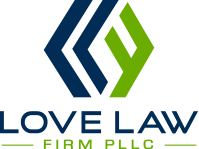
A trademark (“mark”) is what distinguishes your business, and its products or services, from all others. You can probably picture the trademarks of many classic rivalries in your head: Starbucks vs. Dunkin’ Donuts, Coca-Cola vs. Pepsi, or McDonald’s vs. Wendy’s.
The visual associations these businesses have created with their trademarks makes them easy to find on a crowded shelf or a busy street, and they encourage you to play favorites by creating a brand you can align yourself with.
Generally speaking, trademarks come in the form of a word, slogan, design, symbol, or some combination of these elements. Some trademarks can even include a unique scent or sound. Brand names and logos are often trademarked to allow consumers to distinguish between various products, as well as identify the source of those products. Trademarks can carry a lot of meaning for different people. Building visual associations with your business will create a lasting memory for your customers and bring you to the front of their mind next time they need the product or service that your business offers.
Registering a trademark with the United States Patent and Trademark Office (“USPTO”) involves several steps, the most important of which is choosing a mark that is registerable and protectable.
One requirement for registering your trademark requires that there is no likelihood of confusion between the mark and an existing trademark. In fact, a likelihood of confusion between the applicant’s mark and an existing mark is the number one reason the USPTO refuses registrations. Confusion is most likely to arise when the marks are similar, and when the marks are used in connection with a similar product or service, such that a consumer is likely to believe that they have the same origin.
The likelihood of having your trademark registration approved will also increase significantly if the mark is considered “strong.” Strong trademarks have characteristics that are easy to protect due to their unique nature, and the strongest trademarks are categorized as fanciful and/or arbitrary. Fanciful trademarks are created using made-up words with no dictionary definitions. You are probably familiar with some fanciful trademarks already: KODAK, EXXON, and XEROX are famous examples of fanciful trademarks. Arbitrary trademarks use known words, but those words have no classic connection to the goods or services they protect. Good examples of arbitrary trademarks are DOVE for soap, or APPLE for computers. On the other hand, you want to avoid generic or merely descriptive marks. Calling your product “the world’s best product” will be difficult to enforce and completely forgettable to consumers. Words that merely describe what your product or service is, such as “creamy” for ice cream, or “high quality” for a catering service, will likely be words that everybody else trying to sell those products or services will also want to use. Try to remember all of the pizza joints that call themselves “New York Style Pizza” and you’ll quickly see why descriptive trademarks often get rejected.
Throughout your trademark selection process, you’ll want to conduct online searches in various venues to ensure that your mark is not already being used. The USPTO offers a free search system known as TESS (Trademark Electronic Search System), available 24-7 through http://www.uspto.gov/trademarks at “TESS search trademarks.” You can also use free search engines such as Google to identify conflicts. However, these searches can quickly become complex for a layperson to determine what marks are considered confusingly similar, when evaluating a comparison of the marks, relatedness of goods/services, as well as other variables considered in protectability and registrability of trademarks. It is in your best interest to consult with an intellectual property attorney in order to perform a comprehensive search and provide a legal opinion on the protectability and registrability of the trademark.
Once you are reasonably confident that your mark is registerable and protectable, it’s time to file your application for registration. You’ll need to submit the mark for review, whether it is a word, phrase, and/or design. If there are several variations of one trademark that you’d like to protect, they must each be submitted individually. This can be done on the USPTO website for federal trademarks. For a New York state specific trademark, you’ll need to mail in your application along with the appropriate filing fee. Again, you should strongly consider hiring a lawyer specialized in intellectual property to help you with this step, in order to ensure that your application includes all the required elements and that you are complying with state or federal law.
Your attorney will also be poised to guide you through the application process. The USPTO will want evidence that you have used your trademark in commerce either at the time of filing or within six months after receiving approval, which your attorney can help you gather and submit. Additionally, the USPTO may issue an initial rejection of your application which requires a response within certain time limits, which an attorney can assist in preparing a response. Even after a mark is registered, periodic renewals must be filed with the USPTO to maintain the trademark registration.
Furthermore, the USPTO will not enforce or police use of your trademark, meaning that the task is up to you. In fact, failure to police your mark may cause you to lose your trademark rights.
With the help of a knowledgeable attorney, you’ll be able to seek to register your trademark and ensure that nobody but you has the right to use it.
If you liked this article, please check these out as well:
Copyrights vs. Trademarks vs. Patents
What Exactly is Intellectual Property and How Do I Protect It?

